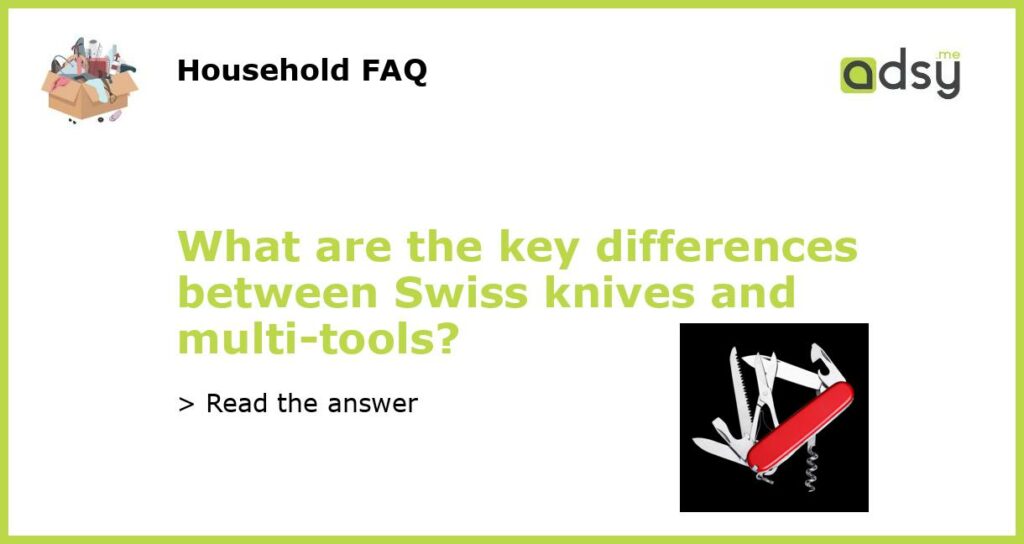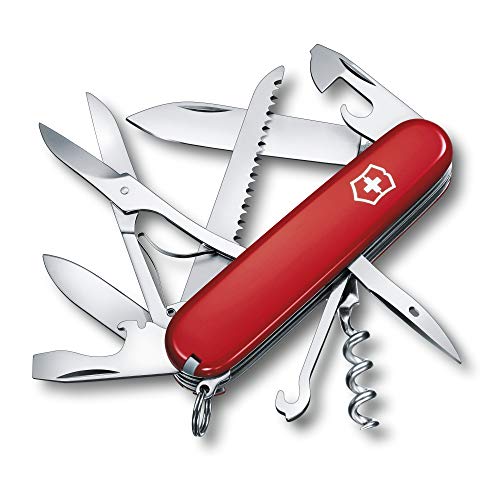Key Differences Between Swiss Knives and Multi-Tools
Swiss knives and multi-tools are both versatile and popular tools that can come in handy for a wide range of tasks. While they may share some similarities, there are key differences between the two that set them apart. Understanding these differences can help you determine which tool is best suited for your specific needs.
Blade Selection
One of the major distinctions between Swiss knives and multi-tools is the selection of blades available. Swiss knives typically come with a single blade that is often smaller in size. This blade is usually folding and can be easily accessed with one hand. In contrast, multi-tools typically feature multiple blades that can be accessed by unfolding the tool or by flipping open various components. These blades may include a knife, scissors, saw, or other specialized cutting tools.
Tool Variety
While Swiss knives are known for their compact design and simplicity, multi-tools are highly versatile and offer a wide range of tools. Swiss knives typically come with a few essential tools such as a screwdriver, can opener, corkscrew, and sometimes a file. On the other hand, multi-tools can include various tools such as pliers, wire cutters, wrenches, bottle openers, and more. This wide variety of tools makes multi-tools suitable for a broader range of tasks, especially those that require a more robust set of tools.
Portability
Portability is another area where Swiss knives and multi-tools differ. Swiss knives are designed to be compact and lightweight, allowing for easy carrying in pockets or on keychains. This makes them convenient for everyday carry and ensures that they are always within reach when needed. On the other hand, multi-tools tend to be slightly larger and bulkier due to the additional tools they include. This can make them less convenient to carry around, especially for those who prefer to travel light. However, some multi-tools come with belt clips or sheaths for easier transportation.
Specialized Functions
While both Swiss knives and multi-tools are versatile, they excel in different areas due to their specialized functions. Swiss knives are particularly suited for tasks that require precision cutting, such as opening packages, cutting threads, or peeling fruits. The compact size and sharpness of the blades make them ideal for these types of tasks. On the other hand, multi-tools shine when it comes to tasks that require more force or specialized tools, such as fixing bicycles, working on household appliances, or camping. The additional tools and sturdier construction of multi-tools make them better suited for these types of tasks.
Price Range
Price can also be a significant differentiating factor between Swiss knives and multi-tools. Swiss knives are often considered to be more affordable, with many reputable brands offering high-quality options at reasonable prices. On the other hand, multi-tools can vary significantly in price depending on the brand, number of tools, and overall quality. High-end multi-tools with a wide range of tools and durable construction can be quite expensive, often exceeding the price of a Swiss knife with similar quality.
In conclusion, while both Swiss knives and multi-tools are valuable tools to have, they differ in blade selection, tool variety, portability, specialized functions, and price range. Swiss knives offer a compact design with a single folding blade and a few essential tools, making them suitable for precise cutting tasks. Multi-tools, on the other hand, provide a wide variety of tools in one compact package, making them ideal for more complex tasks that require force or specialized tools. The choice between the two ultimately depends on the specific needs and preferences of the user.






